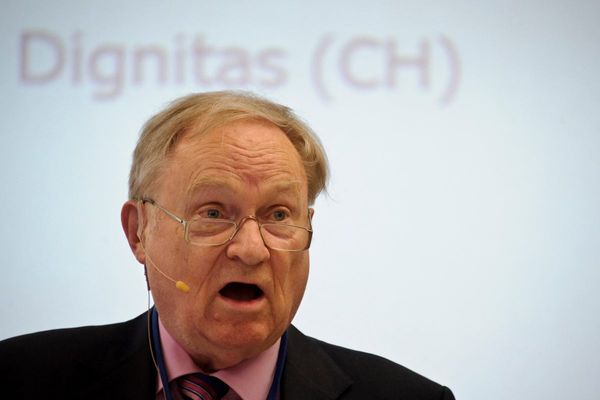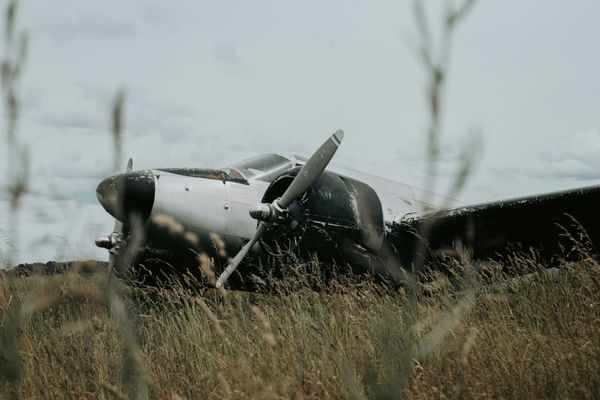
This is the first of Jeffers' three 'boy books', about a small boy who sets off on a series of daunting quests. In each of them the author restricts himself to watercolours. This tale recalls William Blake's engraving 'I want! I want!', with a figure climbing a ladder to the moon, although Jeffers says it has its roots in a Brer Rabbit story
Photograph: Harper Collins

'Henry loved books. But not like you and I love books, no. Not quite...' One day Henry discovers that actually he likes to eat them, leading to some unexpected consequences in this tale about the joy of reading. The illustrations use collage, with drawings made directly on to pages from fly-blown books
Photograph: Harper Collins

The more books Henry ate, the smarter he got, and Henry was eating a lot of books. He became so clever, he was 'even smarter than his teacher in school'. In previous books Jeffers restricted himself to watercolours, but here he has used acrylics and Dulux house paints. The pictures make use of wholemeal textures and rich, strong colours to convey warmth and depth
Photograph: Harper Collins

The paper Jeffers uses as background sets the scene on each page. Here, pages from an atlas and a maths book are used to emphasize Henry's growing knowledge of different school subjects. In the bottom scene, note his fellow contestant's flushed look of dismay and the quiz master's grimace, as Henry delightedly spouts the correct answer Photograph: Harper Collins

Henry's greed grows, and so does his mouth. He starts off on the first page with no mouth at all, but as he develops a taste for books a little smile appears and soon he's stuffing whole libraries into a gaping maw big enough to rival that of one of Bacon's screaming popes
Photograph: Harper Collins

Having found an aeroplane in his cupboard, the boy takes it out for a go and ends up stuck on the moon. Here he ponders what to do next. Despite his small size, we can see how he feels from the angle of his body and eyes peering downwards towards earth. Dots for eyes can be powerful, but their position is crucial; a technique at which Jeffers excels
Photograph: Harper Collins

Luckily, companionship arrives in the form of a young Martian with a broken spaceship. In this sequence the pair discuss how to fix their machines and get home. With their oddly footless fusewire legs, Jeffers' characters are drawn with a delicate, minimalist hand, yet their spirited natures shine through. Facial expressions flit across their spherical heads like the phases of the moon. Noses are represented by a central ridge, tiny ears are optional and there is often no mouth to speak of, giving the characters a kind of dumbfoundedness that contributes to their magic
Photograph: Harper Collins

The Martian is left waiting after the boy parachutes to earth for spare parts, but gets delayed watching his favourite programme and eating popcorn. This is an enchanting picture of the lonely Martian stranded on the moon, peering anxiously at his watch. You can't see his mouth and Jeffers writes no words to accompany the scene, but his body language speaks volumes Photograph: Harper Collins

This story is an environmental whodunnit, centred on the theft of timber from the forest. Yawning empty spaces encourage readers to focus on the characters of the animals - pig, owl, deer, duck, beaver, bear and little girl. This is a thoroughly modern tale with modern day gadgets to boot. Note the pig and his washing machine, the deer doing an exercise video and the beaver on the computer
Photograph: Harper Collins

An eyewitness report by a moose is the first step in solving the mystery of who has been chopping down trees. The book contains only a few moments of speech, which complement Jeffers' sparse prose. Instead, pictures do most of the talking; feelings are communicated by the characters' body language and facial expressions Photograph: Harper Collins

The forest dwellers find their culprit and call the police, who arrives at the guilty bear's house to be greeted by beaver, deer and pig. In this sequence of pages Jeffers chooses to use no words at all, allowing pictures alone to tell the tale. Despite that, words are important to him and he first became passionate about picture books when upon realising the subtle relationship between words and pictures Photograph: Harper Collins







